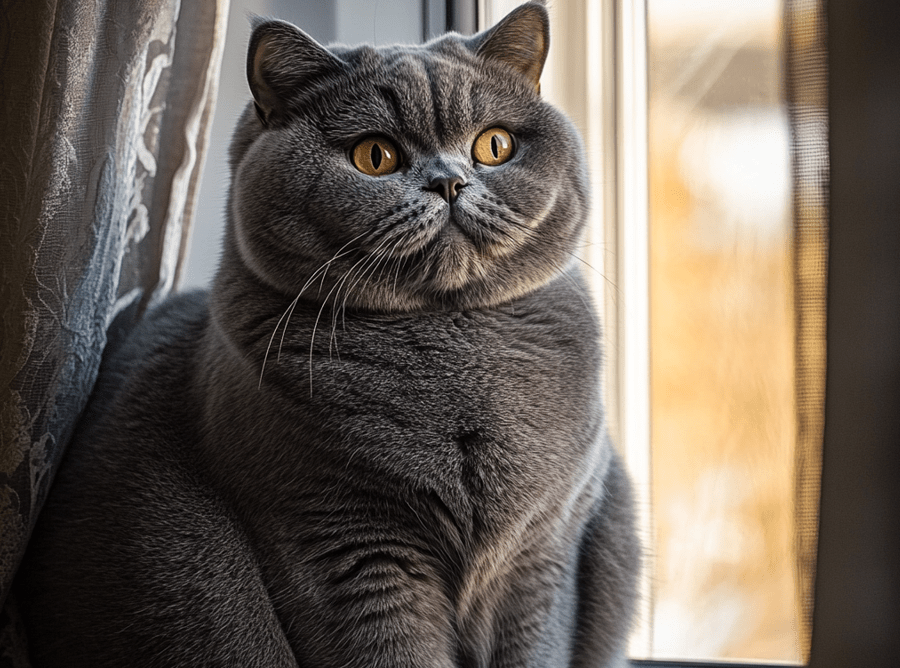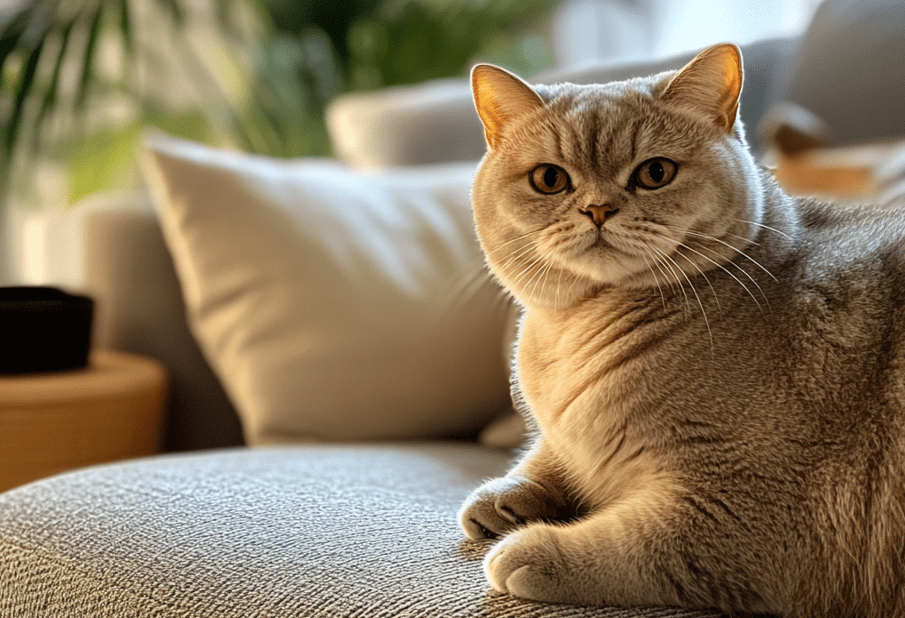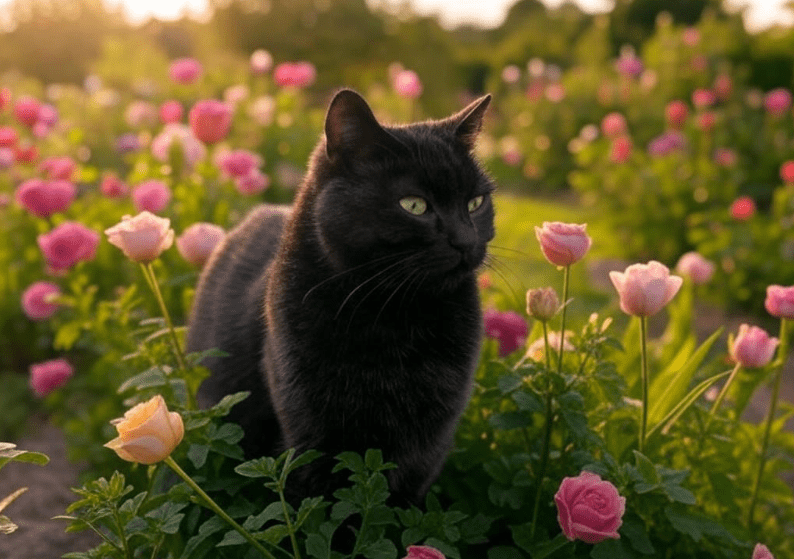
British Shorthairs are beloved for their plush, dense coats and charming, teddy-bear-like appearance. However, maintaining their luxurious fur requires the right grooming tools for British Shorthair cats. Proper grooming not only keeps your cat looking pristine but also promotes their health and strengthens your bond. This comprehensive guide explores the essential grooming tools every British Shorthair owner needs, offering insights into their unique coat care requirements and practical tips for effective grooming routines. Whether you’re a new or seasoned owner, this article will equip you with the knowledge to keep your British Shorthair’s coat in top condition.
Why Grooming is Essential for British Shorthairs
The British Shorthair’s coat is one of its defining features—short, dense, and velvety, with a crisp texture that feels almost woolly. This thick coat serves as insulation but is prone to matting, shedding, and trapping dirt if not properly maintained. Regular grooming prevents hairballs, reduces shedding, and helps you monitor your cat’s skin for issues like fleas or allergies. It also provides an opportunity to check for lumps, scratches, or other health concerns.
Grooming is particularly important for British Shorthairs because their dense undercoat can hide skin problems or parasites. Additionally, these cats are prone to obesity, which can make self-grooming difficult, especially in hard-to-reach areas. By investing in the right cat grooming tools, you can ensure your British Shorthair stays healthy, comfortable, and looking its best.
Understanding the British Shorthair Coat
Before diving into the tools, it’s helpful to understand the British Shorthair’s coat. Their fur consists of two layers:
Topcoat: Short, straight guard hairs that give the coat its sleek appearance.
Undercoat: A dense, soft layer that provides warmth and contributes to the coat’s plush feel.
This double-layered coat sheds moderately year-round, with heavier shedding during seasonal changes (spring and fall). The coat’s thickness varies by color—blue British Shorthairs, for example, often have denser fur than lilac or cream varieties. Knowing your cat’s coat type will guide your choice of grooming tools for British Shorthair cats.
Must-Have Grooming Tools for British Shorthair Owners
Below is a detailed list of essential grooming tools tailored to the needs of British Shorthairs. Each tool is selected to address specific aspects of their coat and overall grooming requirements.

1. Slicker Brush
A slicker brush is a must-have for British Shorthair grooming. Its fine, short wires are designed to penetrate the dense undercoat, removing loose hair, dirt, and dander without irritating the skin.
Why It’s Essential: The slicker brush prevents matting and reduces shedding, which is critical for a breed with such a thick coat. It also stimulates the skin, promoting healthy oil distribution for a shiny coat.
Recommended Features:
1.Self-cleaning mechanism for easy hair removal.
2.Soft, rounded pins to avoid scratching.
3.Ergonomic handle for comfortable grip during longer grooming sessions.
How to Use: Brush gently in the direction of hair growth, focusing on areas prone to matting, such as the belly and hindquarters. Use short, light strokes to avoid tugging.
Top Picks: The Hertzko Self-Cleaning Slicker Brush and Safari Self-Cleaning Slicker Brush are popular for their durability and ease of use.
2. Undercoat Comb
An undercoat comb is specifically designed to tackle the British Shorthair’s dense undercoat. It has longer, widely spaced teeth to reach deep into the fur without pulling.
Why It’s Essential: This tool removes loose undercoat hair, reducing shedding and preventing hairballs. It’s particularly useful during shedding season.
Recommended Features:
1.Dual-length teeth for versatility.
2.Stainless steel construction for durability.
3.Rounded tips for skin safety.
How to Use: Comb gently in small sections, starting at the skin and working outward. Pay attention to areas like the neck and base of the tail.
Top Picks: The Safari Cat Undercoat Comb and GoPets Dematting Comb are excellent choices for British Shorthairs.
3. Deshedding Tool
A deshedding tool, like the Furminator, is a game-changer for managing shedding in British Shorthairs. It removes loose hair from the undercoat without damaging the topcoat.
Why It’s Essential: British Shorthairs shed heavily during seasonal changes, and a deshedding tool can significantly reduce loose hair around your home.
Recommended Features:
1.Stainless steel edge for effective hair removal.
2.Size appropriate for cats (small or medium).
3.Ejector button for easy cleanup.
How to Use: Use once or twice a week during shedding season, applying light pressure in the direction of hair growth. Avoid overusing to prevent thinning the coat.
Top Picks: The Furminator for Cats and Oster ShedMonster are highly rated for their efficiency.
4. Grooming Gloves
Grooming gloves are a gentle alternative to brushes, ideal for cats sensitive to traditional tools. They mimic the feel of petting while removing loose hair.
Why It’s Essential: British Shorthairs often enjoy the massaging sensation of grooming gloves, making them perfect for bonding during grooming sessions.
Recommended Features:
1.Silicone tips for effective hair collection.
2.Breathable mesh material for comfort.
3.Machine-washable design.
How to Use: Stroke your cat as you would during petting, focusing on shedding-prone areas. Rinse or peel off collected hair after use.
Top Picks: The HandsOn All-in-One Grooming Gloves and PetFusion Grooming Gloves are great for British Shorthairs.
5. Nail Clippers
Regular nail trimming is crucial for British Shorthairs, as their sedentary nature can lead to overgrown nails, causing discomfort or scratching.
Why It’s Essential: Trimming prevents nails from curling into the paw pads and reduces damage to furniture.
Recommended Features:
1.Scissor-style or guillotine-style clippers for precision.
2.Safety guard to prevent over-cutting.
3.Sharp, stainless steel blades for clean cuts.
How to Use: Trim the white tip of the nail, avoiding the pink quick. Clip small amounts at a time, rewarding your cat with treats to build trust.
Top Picks: The Safari Professional Nail Trimmer and Pet Republique Cat Nail Clippers are reliable options.
6. Cat-Safe Shampoo and Conditioner

While British Shorthairs don’t need frequent baths, occasional washing with a cat-safe shampoo keeps their coat clean and free of allergens.
Why It’s Essential: Bathing removes excess oils, dirt, and dander, especially for cats with skin sensitivities or allergies.
Recommended Features:
1.Hypoallergenic and tear-free formula.
2.Moisturizing ingredients like aloe or oatmeal.
3.pH-balanced for feline skin.
How to Use: Use lukewarm water and massage the shampoo into the coat, avoiding the face. Rinse thoroughly and follow with a conditioner if needed.
Top Picks: TropiClean Hypoallergenic Cat Shampoo and Burt’s Bees for Cats Hypoallergenic Shampoo are gentle and effective.
7. Ear Cleaner
British Shorthairs can accumulate wax and debris in their ears, making an ear cleaner an essential grooming tool.
Why It’s Essential: Regular ear cleaning prevents infections and keeps your cat comfortable.
Recommended Features:
1.Veterinarian-formulated solution.
2.Non-irritating ingredients.
3.Easy-to-use dropper or wipe.
How to Use: Apply a few drops or use a pre-soaked wipe to clean the outer ear, avoiding the ear canal. Gently massage and wipe away debris.
Top Picks: Virbac Epi-Otic Advanced Ear Cleaner and Pet MD Otic Clean are vet-recommended.
8. Toothbrush and Toothpaste
Dental hygiene is often overlooked but vital for British Shorthairs, who are prone to dental issues like gingivitis.
Why It’s Essential: Brushing reduces plaque buildup, preventing costly dental treatments.
Recommended Features:
1.Small, soft-bristled toothbrush or finger brush.
2.Enzymatic toothpaste safe for cats.
3.Poultry or fish-flavored toothpaste for palatability.
How to Use: Introduce brushing gradually, starting with a dab of toothpaste on your finger. Brush gently along the gumline once or twice a week.
Top Picks: Virbac C.E.T. Enzymatic Toothpaste and Sentry Petrodex Dental Kit are excellent for feline dental care.
Grooming Tips for British Shorthair Owners
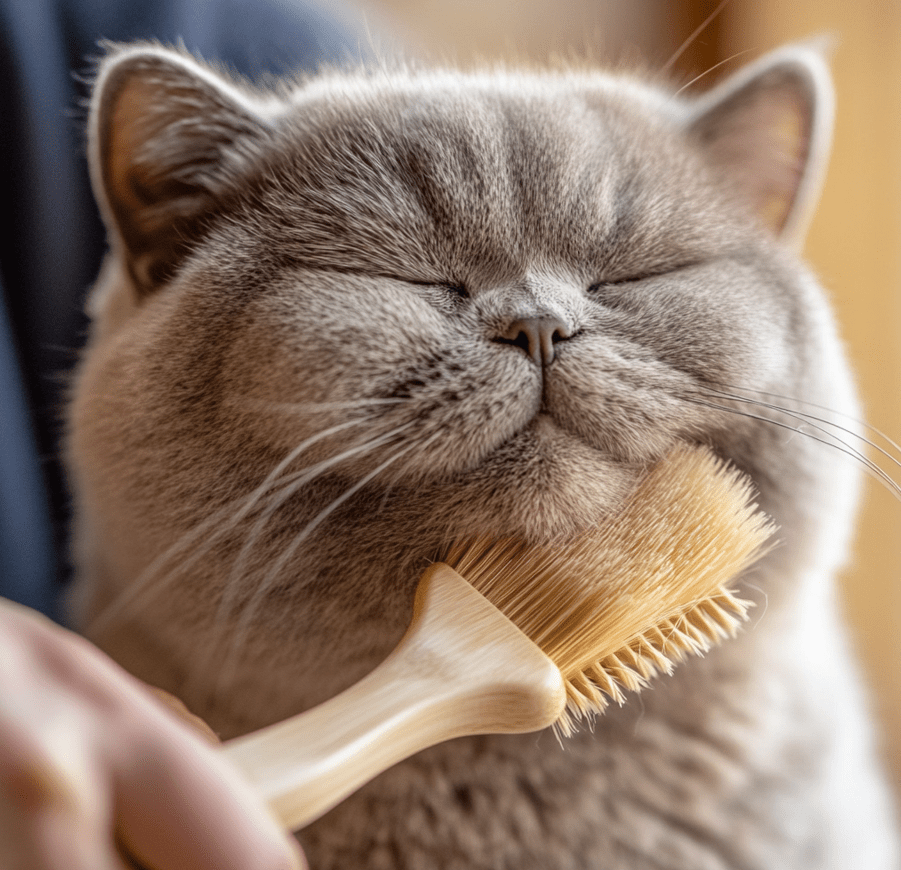
To make grooming a positive experience for you and your British Shorthair, follow these practical tips:
Start Early: Introduce grooming tools to kittens to build familiarity and trust.
Create a Routine: Groom your cat at the same time each week to establish a predictable schedule.
Use Positive Reinforcement: Reward your cat with treats, praise, or playtime to associate grooming with positive experiences.
Check for Sensitivities: Monitor your cat’s skin for redness or irritation, especially when using new tools or products.
Groom in Short Sessions: British Shorthairs have short attention spans, so keep sessions to 5-10 minutes, especially for kittens or nervous cats.
Inspect Regularly: Use grooming as an opportunity to check for fleas, ticks, or skin abnormalities.
Seasonal Grooming Considerations
British Shorthairs require adjusted grooming routines based on the season:
Spring and Fall: Increase brushing and deshedding to manage heavy shedding. Use an undercoat comb and deshedding tool 2-3 times a week.
Summer: Focus on flea prevention, as warmer weather increases parasite activity. Check the coat and skin regularly.
Winter: Reduce bathing to avoid drying out the coat. Use a slicker brush to distribute natural oils for a healthy shine.
Common Grooming Mistakes to Avoid
Even well-meaning owners can make grooming mistakes. Here are pitfalls to avoid:
Over-Bathing: Bathing too frequently strips natural oils, leading to dry skin. Limit baths to once every 4-6 weeks unless advised by a vet.
Using Human Products: Never use human shampoos or conditioners, as they can irritate feline skin.
Brushing Too Aggressively: Harsh brushing can cause discomfort or skin irritation. Always use gentle, controlled strokes.
Neglecting Dental Care: Skipping tooth brushing can lead to dental disease, which affects overall health.
Ignoring Mats: Mats can cause pain and harbor bacteria. Address them promptly with a dematting comb or professional help.
When to Seek Professional Grooming
While most British Shorthair grooming can be done at home, professional groomers are helpful in certain situations:
Severe Matting: If mats are too tight or close to the skin, a groomer can safely remove them.
Nail Trimming Anxiety: If your cat resists nail clipping, a professional can handle it quickly.
Medical Conditions: Cats with skin conditions or allergies may need specialized grooming under veterinary guidance.
Lion Cut: Some owners opt for a lion cut during hot weather, which requires professional expertise.
Look for groomers certified by organizations like the National Cat Groomers Institute of America (NCGIA) and ensure they have experience with British Shorthairs.
Conclusion
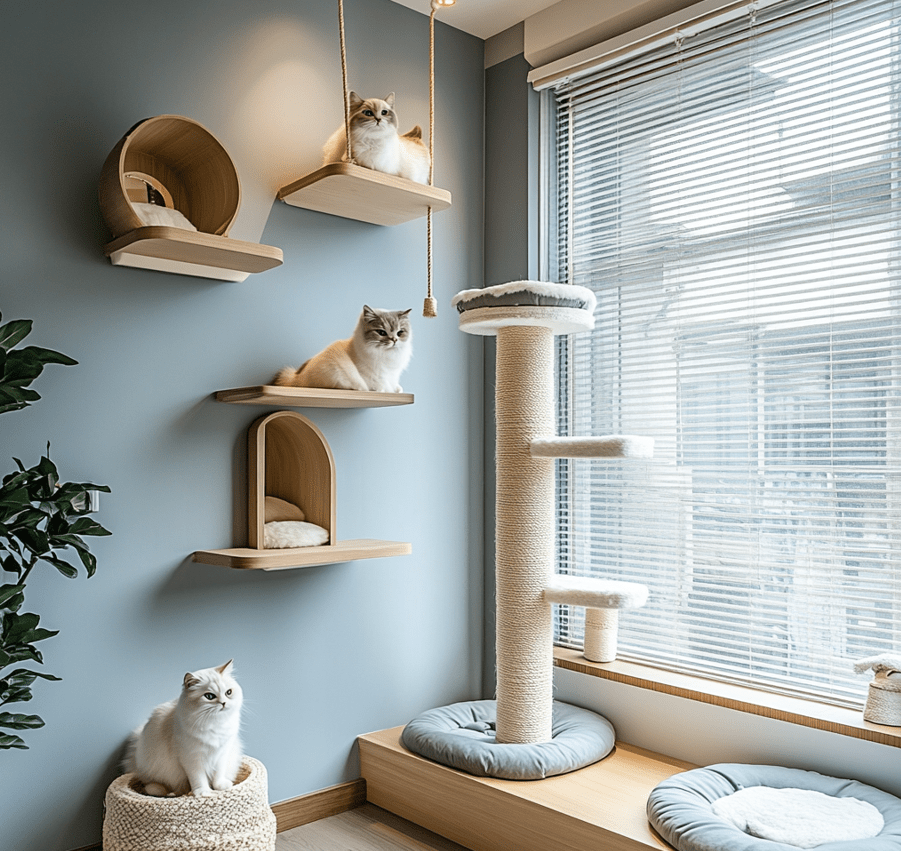
Grooming your British Shorthair is more than a maintenance task—it’s an opportunity to enhance their health, comfort, and beauty. By investing in the right grooming tools for British Shorthair cats, such as slicker brushes, undercoat combs, deshedding tools, and nail clippers, you can keep their iconic coat in pristine condition. Pair these tools with a consistent routine, positive reinforcement, and seasonal adjustments to ensure your cat thrives. With the insights and recommendations in this guide, you’re well-equipped to be the best groomer your British Shorthair could ask for.

